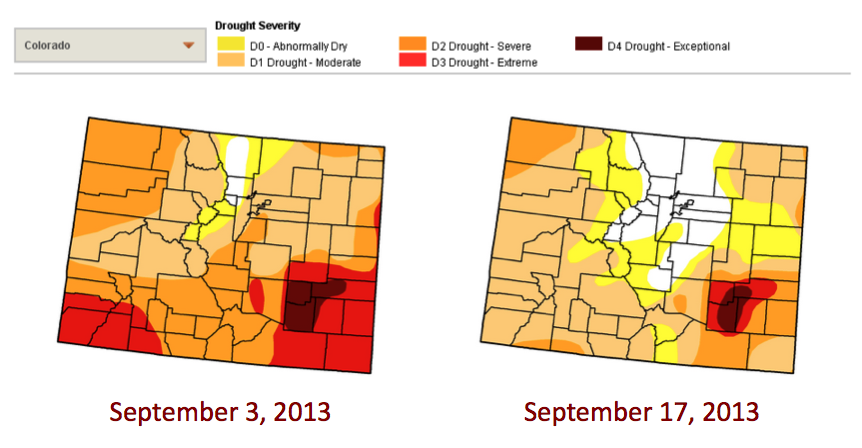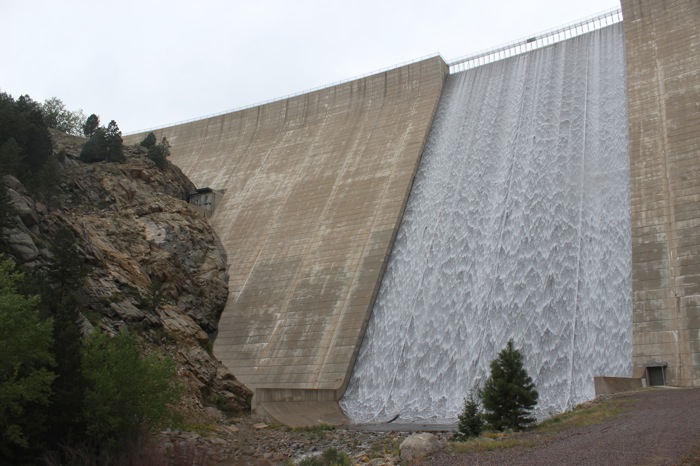By Jeff Lukas, CIRES Western Water Assessment
A month has passed since the devastating floods on the Front Range, and it’s a little easier to discuss the positive effects of the extraordinary rain event for the impacted area, and across Colorado.
The first was the significant drought relief that the rains brought, as shown in the U.S. Drought Monitor. The Drought Monitor synthesizes several different drought indicators into a single scale of drought severity, ranging from D0 (abnormally dry; conditions are generally below the 30th percentile) to D4 (exceptional drought; conditions are generally below the 2nd percentile).
Prior to the rain event, conditions on the Front Range ranged from no drought in western Boulder and Larimer Counties, to D3 (extreme drought) in parts of Pueblo County, with a large swath of D1 (moderate drought) and D2 (severe drought) in between. After the 6” to 18” of rain—roughly 25% to 100% of average annual precipitation falling in one week—all of the Front Range was upgraded by one to three categories, with the drought-free area expanding to cover most of the urban areas and the northern headwaters of the South Platte River. The rest of Colorado also benefited from the lesser—yet still well-above-average—precipitation amounts received there.
In addition, while most of the flood runoff rolled out of the state without being stored, the small to mid-sized Front Range reservoirs with direct stream inflows like Gross Reservoir refilled at a time of year when storage is usually declining fast from an early-summer peak.
On the other side of the Continental Divide, larger reservoirs like Dillon Reservoir also got a big boost. Even enormous Lake Powell far downstream on the Colorado River saw a gain of about 200,000 acre-feet—nearly the entire capacity of Dillon Reservoir—during a period in which it was expected to decline by half that amount. The rains also led to a dramatic reduction in outdoor and agricultural water use, which also benefited the reservoirs.



